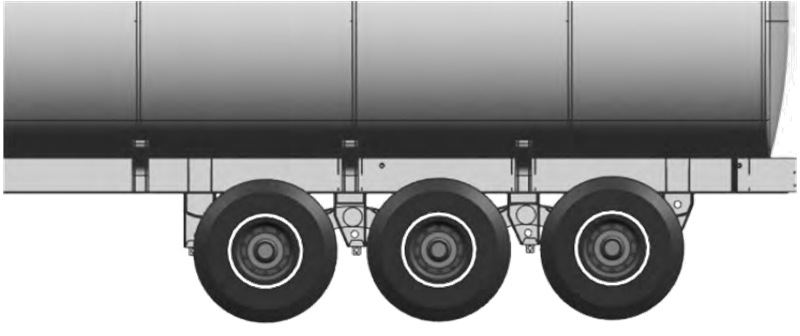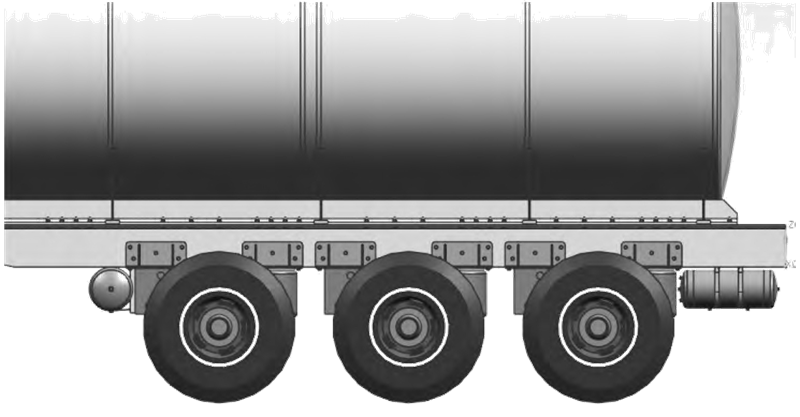With the development of the social economy, especially in the oil transportation industry, customers are not as cost-sensitive as before. Still, they are more and more demanding on the delivery time of tankers. A shorter vehicle delivery time means the customer can put the vehicle into operation earlier and achieve profitability earlier. Therefore, in the case of comparable product quality, the customer is more willing to choose the product with a shorter delivery time.
Currently, most fuel tanker trailer adopts the integrated structure of the frame and tank support, and its production process is tank body manufacturing → integrated frame welding on the tank body → suspension axle welding on the tank body frame, → installation of tires. All the above processes can only be carried out step by step in sequence. This integral subframe structure is inconvenient for reasonable production arrangement, which makes the whole vehicle production cycle longer and affects the delivery cycle. At the same time, the integral subframe structure (see Figure 1) is also inconvenient for tank maintenance, so it is necessary to improve the critical subframe structure, enhance the fuel tanker trailer production efficiency and shorten the production cycle.

To find an effective solution to the problem that the current integral subframe structure of fuel tanker trailer seriously affects the delivery time, the final direction of improvement is to divide the whole production of fuel tanker trailer into several modules to be produced simultaneously and finally assembled into a complete vehicle, to achieve the purpose of shortening the production cycle.
To shorten the production cycle, the traditional integral subframe structure was improved and designed, and the split sub-frame structure (see Figure 2) was adopted after the improvement. This structure can divide the production of a fuel tanker trailer into two significant parts to be produced at the same time, namely the tank part (see Figure 3) and the frame part (see Figure 4), which are finally assembled by bolting together. The first includes tank body welding, support welding, etc., and the second provides frame welding, suspension axle, tire installation, etc. After the two parts are welded, they are assembled by bolting, as shown in Figure 5.




After the fuel tanker truck adopts the improved split subframe, it is possible to arrange two production teams to carry out production simultaneously. The teams do not affect each other. At the same time, this makes the installation of axles and tires more convenient and safe than before. By improving the structure, the production cycle time of the whole fuel tanker truck is shortened by 3~4 t compared with the original integral subframe structure, which significantly reduces the production cycle time. The split subframe structure of fuel tanker trailer is more convenient for later tank maintenance, especially for aluminum alloy fuel tanker trucks, because the aluminum alloy material can only achieve flat welding and vertical welding. The split structure can remove the frame part when the tank is repaired and then put the tank on the flip tool to flip the whole tank over to restore the bottom of the tank by welding.
By designing the subframe structure into the split system, the production arrangement is more reasonable, and the fuel tanker trailer production cycle is shortened significantly, which can better meet the customer’s requirement of shorter and shorter delivery time and improve the competitiveness of the product in the market.






